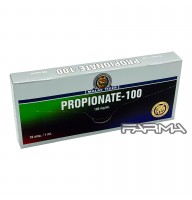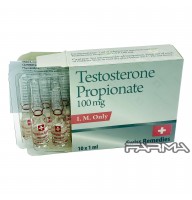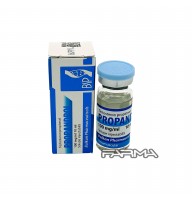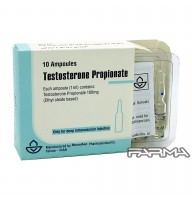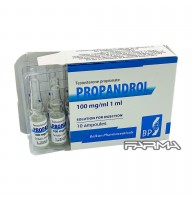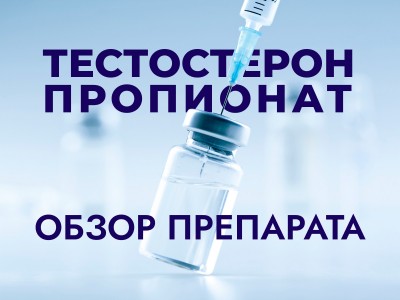Introduction
Testosterone Propionate is a fast-acting anabolic steroid widely used for its efficiency in muscle growth and performance enhancement. Proper administration is crucial to maximize benefits and minimize risks. This comprehensive guide provides detailed instructions on how to inject Testosterone Propionate, including dosage guidelines and best practices.
What is Testosterone Propionate?
Testosterone Propionate is a synthetic form of the naturally occurring testosterone hormone. It is attached to the propionate ester, which allows for a rapid release into the bloodstream. Due to its short half-life, frequent injections are required to maintain stable blood levels.
Preparation Before Injection
1. Gather Supplies
-
Testosterone Propionate vial
-
Sterile syringes (typically 1-3 ml)
-
Sterile needles (usually 23-25 gauge, 1-1.5 inch for intramuscular injections)
-
Alcohol swabs
-
Sharps container for safe needle disposal
2. Wash Hands
Thoroughly wash your hands with soap and water to ensure cleanliness and reduce the risk of infection.
3. Prepare the Injection Site
Choose an injection site, typically the gluteus (buttocks), thigh, or deltoid (shoulder). Clean the area with an alcohol swab to disinfect the skin.
Drawing the Testosterone Propionate
-
Sterilize the Vial Top: Use an alcohol swab to clean the top of the vial.
-
Draw Air into the Syringe: Pull back the plunger to draw an amount of air into the syringe equal to the intended dose of Testosterone Propionate.
-
Insert Needle into Vial: Insert the needle into the vial and push the air in. This step helps to equalize pressure, making it easier to draw the liquid.
-
Draw the Liquid: Invert the vial and draw the desired dose of Testosterone Propionate into the syringe.
-
Remove Air Bubbles: Tap the syringe to move any air bubbles to the top, then push the plunger slightly to expel the air.
Injection Process
1. Choose the Injection Site
-
Gluteus (Buttocks): Preferred for larger volumes due to the large muscle mass.
-
Thigh (Quadriceps): Accessible and easy to self-administer.
-
Deltoid (Shoulder): Suitable for smaller volumes.
2. Administer the Injection
-
Insert the Needle: Hold the syringe like a dart and insert the needle into the muscle at a 90-degree angle in a swift motion.
-
Aspirate: Pull back the plunger slightly to check for blood. If blood enters the syringe, you’ve hit a blood vessel. Withdraw and choose a new site.
-
Inject the Solution: If no blood appears, slowly push the plunger to inject the Testosterone Propionate into the muscle.
-
Withdraw the Needle: Once the injection is complete, swiftly withdraw the needle.
-
Apply Pressure: Press an alcohol swab or a clean cotton ball over the injection site to minimize bleeding and apply a bandage if necessary.
Dosage Guidelines
1. Beginners
-
Dosage: 50-100 mg every other day.
-
Cycle Length: Typically 6-8 weeks.
2. Intermediate Users
-
Dosage: 100-150 mg every other day.
-
Cycle Length: Typically 8-10 weeks.
3. Advanced Users
-
Dosage: 150-200 mg every other day.
-
Cycle Length: Typically 10-12 weeks.
It is important to start with a lower dose to assess tolerance and gradually increase if necessary.
Post-Injection Care
-
Dispose of Needles Properly: Place used needles and syringes in a sharps container.
-
Monitor the Injection Site: Watch for any signs of infection such as redness, swelling, or pain.
-
Maintain Hygiene: Regularly clean and rotate injection sites to prevent tissue damage and scar formation.
Potential Side Effects
1. Estrogenic Side Effects
Testosterone Propionate can convert to estrogen, potentially leading to gynecomastia, water retention, and increased fat gain. The use of aromatase inhibitors (AIs) like Arimidex or Letrozole can help manage these effects.
2. Androgenic Side Effects
As an androgenic compound, it may cause acne, hair loss, and increased body hair growth. These effects are typically dose-dependent.
3. Cardiovascular Issues
Monitor cholesterol levels and maintain a heart-healthy diet, as Testosterone Propionate can impact lipid profiles, increasing the risk of cardiovascular issues.
4. Suppression of Natural Testosterone Production
Using exogenous testosterone suppresses natural testosterone production. Implementing post-cycle therapy (PCT) with SERMs such as Clomid and Nolvadex can help restore natural hormone levels.
Conclusion
Injecting Testosterone Propionate requires careful attention to dosage, administration techniques, and post-injection care to maximize benefits and minimize risks. By following these guidelines, you can effectively incorporate Testosterone Propionate into your fitness regimen, achieving your desired physique and performance enhancements safely and efficiently. Always consult with a healthcare professional before starting any new supplement or steroid regimen to ensure it aligns with your individual health needs and goals.
